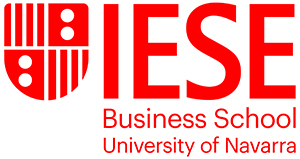It can happen in a flash. Nobody, or close to it, knew there was an open hiring process at a company. The job was unquestionably interesting, perfect for you. But someone else got there first before you could even react. How did they hear about it? And how did they win over the recruiters so quickly?
Sometimes, things are simpler than they seem. Maria Ángeles Losa, director of the MBA program at IESE, recalls that people who get jobs quickly are those who “don’t use a sledgehammer to crack a nut when they’re looking for opportunities.” That’s why, before executives start talking to companies or mobilizing on LinkedIn or with headhunters, Maria Ángeles recommends:
- Identifying the projects that interest you.
- Analyzing exactly what sets you apart from your potential competitors.
- Preparing your own value proposition.
Professional projects: Do you know what you like?
One of the best ways to identify the projects you’d like to work on, and who could offer them to you, is, as we recommended in the Career Toolkit ebook, to ask yourself:
- What you want to achieve in your job and whether or not you are achieving it.
- What you would need to add to your job to feel enthusiastic about it every morning.
- What practical career moves you should make to add more value to society.
To realistically discern those career moves, search online and compare your dreams with the reality of the data. That will help you figure out:
- If there are job openings similar to what you’re looking for.
- Who is hiring for those jobs (make a list of companies).
- What is the economic health of the companies or sectors on your list.
How to access the hidden job market: Do you know who you are and what’s expected of you?
Now it’s important to determine what sets you apart from the other professionals who will be competing to join the same projects that interest you. The best way to do so is: :
1. Identify your strengths and weaknesses.
A tip: Do a rigorous self-analysis and ask your colleagues for an 180º assessment. You can use this simple 180 self-evaluation document.
2. Compare your strengths and weaknesses with the requirements of the job openings that interest you
Or with the candidate profile your company or sector contacts tell you they’re looking for.
Another tip: Set the bar high and assume many of your rivals will meet the basic requirements.
3. Expand on your strengths and mitigate your weaknesses
Through training and developing projects inside or outside the company where you work.

Professional executive projects: Starting the conversation
Professional projects not only help you acquire and strengthen knowledge and skills, but, along with seminars and professional forums, can also help you get to know the people and sectors that offer “invisible” jobs.
They can include everything from pro-bono initiatives at a foundation to launching a small business in parallel to your usual work. Or, if you’re looking for a job, it can be a temporary collaboration with a company as a freelancer for a strategic action.
Professional projects are an especially powerful weapon when you don’t have a job at the moment and you want to transition to another sector, company or occupation. The reasons are:
- You make contact with the professionals who may hire you in the future, but not by asking them for a job. Instead, you offer yourself up to add value to their projects or encourage them to share ideas for yours.
- They get to know you gradually as you work on their projects, which will also help you expand your training.
- You could be the first person they contact when new opportunities arise. They already know you. And they can offer you or speak to you about job openings before they are advertised, or help you (with their backing) participate in a hiring process.
Hidden job offers: How do I meet the people who can help me?
Rafa Peces is general manager of a family business. He’s also successfully changed jobs five times and has taught classes at IESE. Rafa’s advice for you is this:
- Maintain an active network of important contacts. Never stop nurturing it. Networking is fundamental for any executive.
- Research on and off of LinkedIn to find out who is participating in the projects you’d love to join.
- If can’t find anyone to introduce you, introduce yourself, even if you only meet them through email.
- Follow up on every email with phone calls a few days later.
- If you get a job interview, explain in detail what you’d like to do at their company. Demonstrate what you know about their business… and your excitement!
However, remember that if you just entered the ranks of the unemployed, first and foremost it’s important to:
- Spend three months assimilating the change so you don’t come off disoriented or very critical of the previous company in your new job interviews.
- Have fun learning new things, practicing sports and doing activities that you like. Find a way back to your happiness, smiles and optimism!
How do companies hire executives in an invisible market?
Professionals aren’t the only ones who probe the market for unadvertised jobs. Companies do so too, but with very specific obstacles:
- They want to keep a low profile for their processes. They don’t want too many applicants.
- They need to thoroughly understand the candidates they want to hire and why they need to hire them.
- They have to think about how companies attract the applicants they want to hire and figure out ways to improve it.
- It’s essential for them to identify the sectors and companies where they can find this type of candidates.
- They are often forced to lure executives away from existing jobs, and they don’t how much to offer them.
Ultimately, it’s not always as easy as identifying or recruiting the person who could fit a specific position like a glove, especially when those people are comfortable where they are. Or so it seems. Wondering what companies do to find and hire those professionals?
The following situations are likely to occur:
- The CEOs ask the executives from each department whether they know any candidates for a strategic job opening.
- The executives pull out their contact lists to track down candidates.
- Meanwhile, Human Resources incorporates the professionals that have been vouched for by executives or the CEO into public or confidential selection processes. Or hire headhunters to try to find candidates among executives who aren’t even looking for work.
As we can see, this hidden hiring market isn’t easy to navigate for businesses or for professionals, because exploiting it requires planning and very specific skills. However, the opportunities are so interesting that anyone would want to know about them. Are you prepared to not let the next one get snatched away in a flash? Is your company prepared to not let the next stellar candidate escape?
Some executives successfully track down the projects they want to join and quickly change jobs before the position at the desired company even goes public. But to do so, they have to be prepared to face the hiring process and, most importantly, be trained to take on the next professional challenge.
IESE executive programs and masters reveal all the tools and case studies to not only make you a candidate for those hidden jobs, but to be the perfect applicant and leader for the position.

















